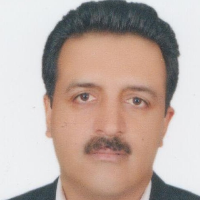A Study on scientific output of Iranian Nano Technology Journals and analyses of Co- Authorship network structure
Author(s):
Abstract:
This research aims to study co-authorship in Iranian journal papers in the field of nanotechnology. For our purpose, two main objectives have been examined: The first objective is to investigate the growth in the number of articles and authors, and to examine their relationship with the collaborative coefficient in Iranian domestic journals of nanotechnology from 2005 to 2013; the second objective is to examine the network structure of active authors of Iranian journal articles of nanotechnology during the period under study. Research materials include 904 papers, published in 12 journals, by 1646 authors during the period 2005-2013. This is an applied research study conducted as a survey, using scientometrics approaches. Data analysis has been carried out using techniques of social network analysis. To create the matrix of co-authorship a software package called Ravar Matrix is used, while for the purpose of social network analysis the Ucinet software package and its supplementary package, Netdraw, is used. The results demonstrate that the growth of papers and authors follows a positive exponential trend. The most prevalent authorship model in the production of the articles is the two-authorship model, with and the average number of authors for each paper being three. In total, 1646 authors contributed to the formation of a co-authorship network relating to the papers, amongst which 228 authors had an effective role. According to the findings "Manafi", "Salvati Niasari", and "Sadegh Hosseni" are respectively the top three authors in terms of the number of papers published. Where degree centrality is concerned, "Manafi", "Salvati Niasari", and "Badie" occupied the first to third places. In terms of centrality, the first ranking is occupied by both " Kokabi and "Manafi", while "Manafi" is at the top for betweenness, with "Kokabi" and "Saraf Mamoori" ranked second and third respectively. Overall, findings indicate that when it comes to the writing of papers for Iranian Nano journals, the top authors, in terms of the number of papers published, have collaborated with less productive authors.
Keywords:
Language:
Persian
Published:
Rahyaft Journal, Volume:27 Issue: 65, 2017
Page:
51
magiran.com/p1700835
دانلود و مطالعه متن این مقاله با یکی از روشهای زیر امکان پذیر است:
اشتراک شخصی
با عضویت و پرداخت آنلاین حق اشتراک یکساله به مبلغ 1,390,000ريال میتوانید 70 عنوان مطلب دانلود کنید!
اشتراک سازمانی
به کتابخانه دانشگاه یا محل کار خود پیشنهاد کنید تا اشتراک سازمانی این پایگاه را برای دسترسی نامحدود همه کاربران به متن مطالب تهیه نمایند!
توجه!
- حق عضویت دریافتی صرف حمایت از نشریات عضو و نگهداری، تکمیل و توسعه مگیران میشود.
- پرداخت حق اشتراک و دانلود مقالات اجازه بازنشر آن در سایر رسانههای چاپی و دیجیتال را به کاربر نمیدهد.
In order to view content subscription is required
Personal subscription
Subscribe magiran.com for 70 € euros via PayPal and download 70 articles during a year.
Organization subscription
Please contact us to subscribe your university or library for unlimited access!


